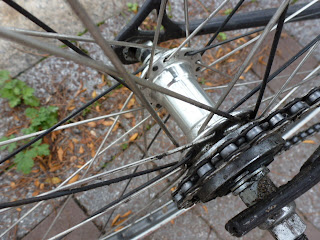With Halloween only a few days away, I thought it might be fun to look at some "freak bikes".
Turns out, there's a page filled with images of them.
This bike caught my eye. It was posted on Bike Thing. The blog's author, Tyler Stickley, says, "You suck at Photoshop when you make a monstrosity like this."
The ovalized wheel alone is enough to make this the Thalidomide Baby of bicycles.
But I wonder: Who is pedals what on this bike? And how does one rider's shift affect another rider's ride?
At least we know only one person can ride--and pedal--this thing:
I can just see a member of the NYPD's Bike Patrol riding this--in 1888 or thereabouts! Said officer might have been chasing this guy:
Turns out, there's a page filled with images of them.
This bike caught my eye. It was posted on Bike Thing. The blog's author, Tyler Stickley, says, "You suck at Photoshop when you make a monstrosity like this."
The ovalized wheel alone is enough to make this the Thalidomide Baby of bicycles.
But I wonder: Who is pedals what on this bike? And how does one rider's shift affect another rider's ride?
At least we know only one person can ride--and pedal--this thing:
 |
| From Yabai Bicycle Club's blog. |
I can just see a member of the NYPD's Bike Patrol riding this--in 1888 or thereabouts! Said officer might have been chasing this guy:
 |
| From Tree Hugger. |





.jpg)
















